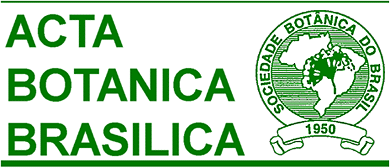Resumo em Português:
Alguns fatores podem influenciar a distribuição dos recursos florais e sistemas de polinização bióticos nos ecossistemas, como por exemplo, o clima, a altitude, a região geográfica, fragmentação de áreas naturais e as diferenças na composição florística na estratificação vertical. Este estudo teve por objetivo avaliar a distribuição dos sistemas de polinização bióticos na estratificação vertical em fragmentos de cerrado sentido restrito no Triângulo Mineiro. Não houve diferença significativa (χ²0,05,9 =14,17; p = 0,12) na riqueza florística geral entre os fragmentos, nem quando comparada em separado para cada estrato (arbóreo, arbustivo, herbáceo e liana), estando o estrato arbustivo mais bem representado. Da mesma forma, não houve diferenças significativas entre fragmentos quanto aos sistemas de polinização (χ²0,05,21 =13,80; p = 0,8778), sendo a polinização por abelhas mais comum, correspondendo ao menos 85% das espécies de plantas em cada fragmento. Em termos relativos, as plantas polinizadas por abelhas foram dominantes em todos os estratos, chegando a 100% das lianas e herbáceas em alguns fragmentos. Neste estudo, com base na composição florística e distribuição dos sistemas de polinização na estratificação vertical, podemos caracterizar um mosaico vertical no cerrado sentido restrito, que tem implicações na sustentabilidade das comunidades no cerrado, assim como os mosaicos horizontais de fitofisionomias.
Resumo em Inglês:
Several factors can influence the distribution of floral resources and pollination systems in ecosystems, such as climate, altitude, geographic region, fragmentation of natural areas and differences in floristic composition along the vertical stratification. This study aimed to evaluate the distribution of the vertical stratification of biotic pollination systems in cerrado (sensu stricto) fragments in the Triângulo Mineiro. There was no significant difference (χ²0.05,9=14.17; P = 0.12) in total plant species richness among fragments, nor in the species richness of each layer (trees, shrubs, herbs and lianas) and the shrub layer was the best represented. Likewise, there was no significant difference between fragments for the systems of pollination (χ²0.05,21 =13.80; P = 0.8778). Pollination by bees was the most common, corresponding to 85% of species in each fragment. In relative terms, plants pollinated by bees were dominant in all strata, reaching 100% for the lianas in fragments 1, 3 and 4 and for the herbs in fragments 1 and 4. In this study, based on floristic composition and distribution of biotic pollination systems in the vertical stratification, we could define a vertical mosaic in the cerrado studied, which has implications for the sustainability of communities in the cerrado, as well as the horizontal mosaic of vegetation types.
